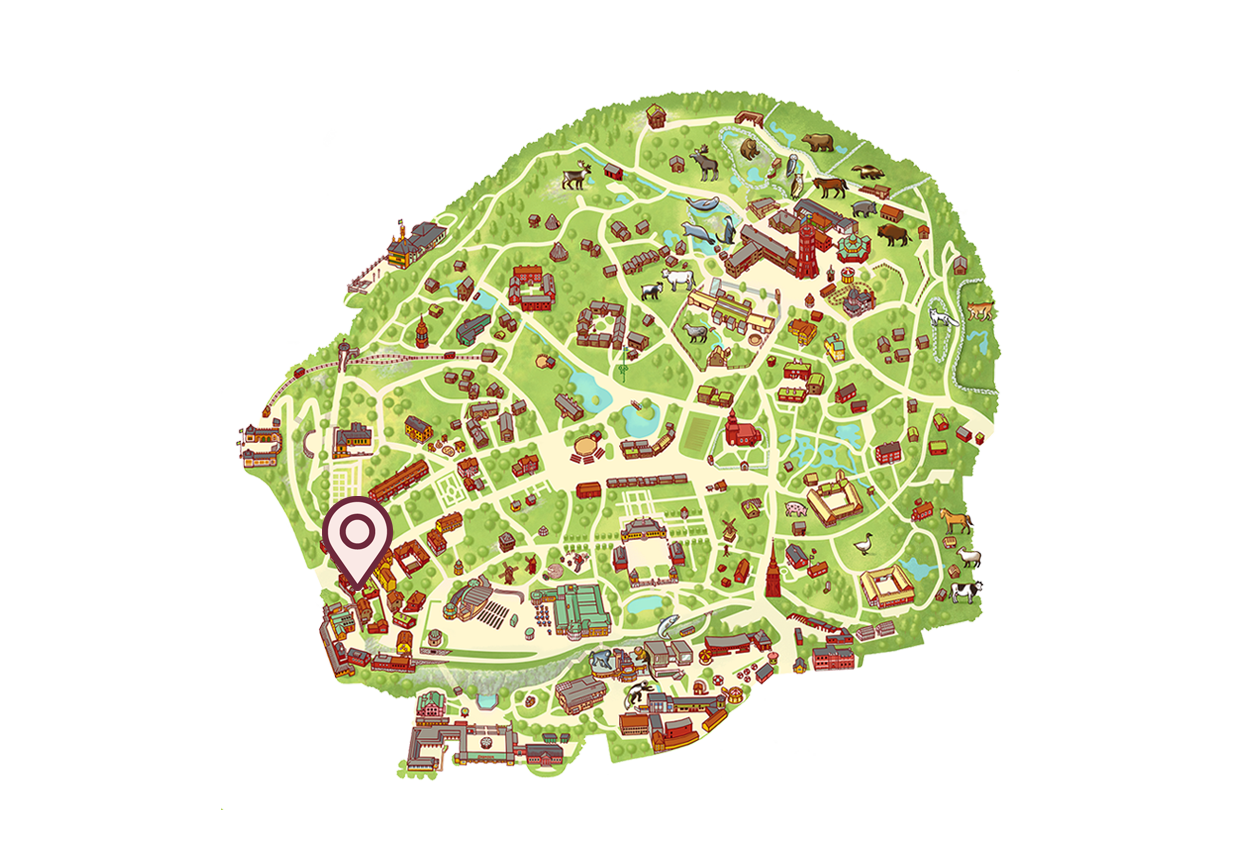The garden at the Printer’s Workshop
Step into the yard behind the Printer’s Workshop and discover an urban garden with a red-painted summer house, growing beds, fruit trees and ornamental bushes.
Find The garden at the Printer’s Workshop

Step into the yard behind the Printer’s Workshop and discover an urban garden with a red-painted summer house, growing beds, fruit trees and ornamental bushes.

| The Children´s zoo (Lill-Skansen) included in the entrance fee |
|---|
| Jan-Mar weekdays10-15 weekends 10-16, April 10-16, May 10.00–17.00, Jun-Aug 10.00-18.00, Sept 10.00-17.00, Oct-Dec weekdays 10-15, weekends 10-16 |
| Baltic Sea Science Center, included in the entrance fee |
|---|
| Jan-Mar weekdays10-15 weekends 10-16, April 10-16, May 10.00–17.00, Jun-Aug 10.00-18.00, Sept 10.00-17.00, Oct-Dec weekdays 10-15, weekends 10-16 |
| Funicular railway (Bergbanan) | |
|---|---|
| The funicular railwayruns daily during Easter, weekends in April and thereafter daily. |
| The Skansen-Aquarium |
|---|
| Opens daily 10.00 see calendar for closing hours |